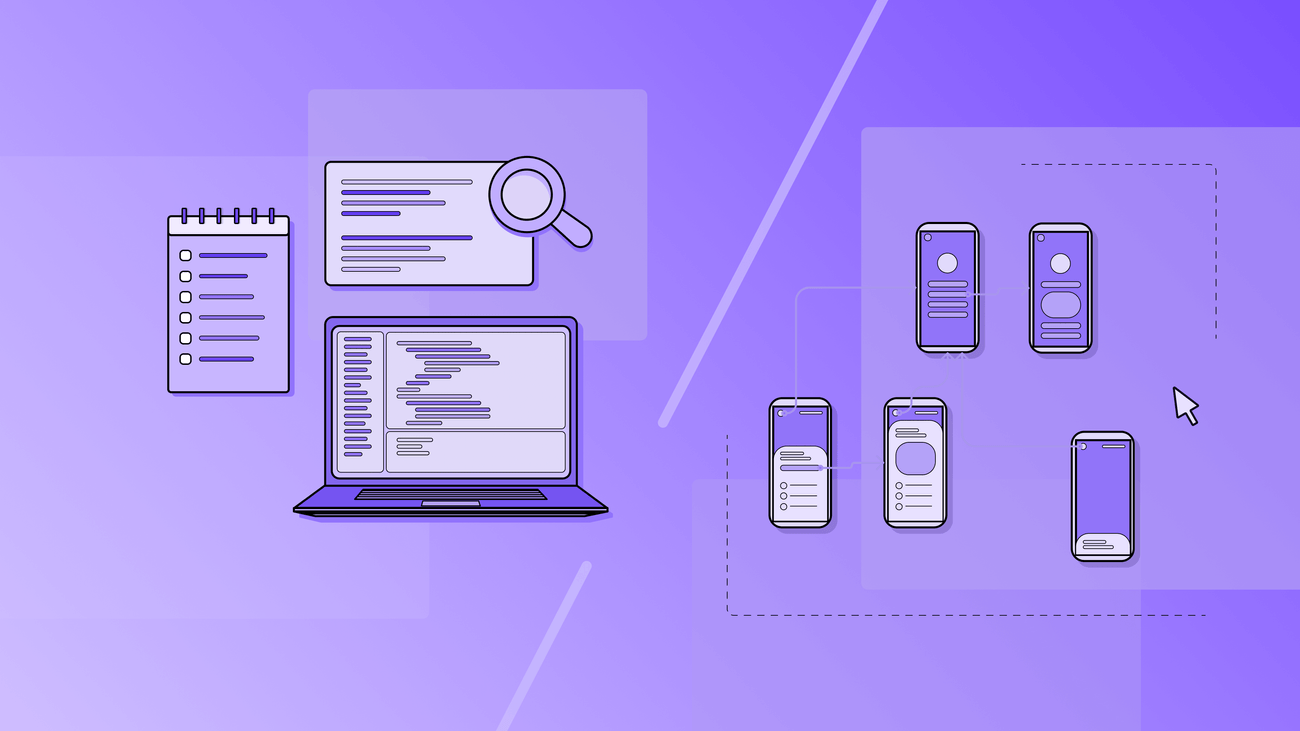MVP vs. Prototype
When you start developing an application, getting early user feedback is key. You have two main options to do this: building a prototype or creating an MVP. In this article, we'll take a closer look at the differences between these approaches.
Application development can be costly and time-consuming. It might take months and in some cases even years to launch a final product. If you don't identify and fix issues early, you could face expensive problems later on.
Companies sometimes spend a lot of money developing custom products that don't actually solve their users' main problems. This is a costly mistake you want to avoid.
We'll outline the main similarities and differences between prototypes and MVPs. You'll learn about their benefits, ideal users and challenges. We'll also look at tools and strategies you can use, and how these two approaches are becoming more similar.
What's a Prototype?
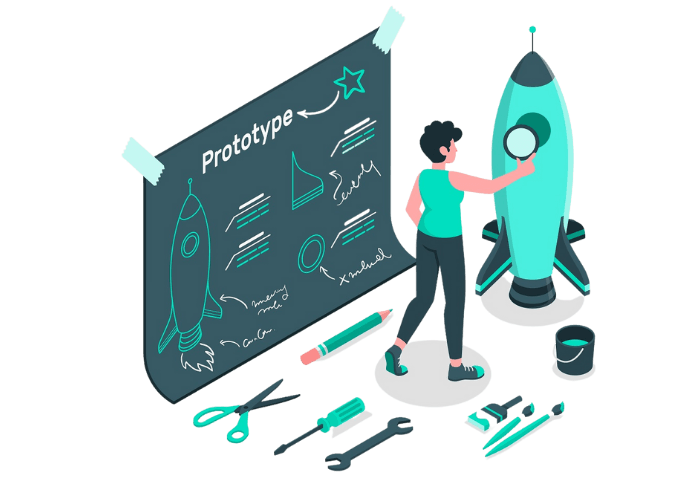
In layman's terms, a prototype gives shape to your idea. It's something you can see and touch, not just a concept in your mind.
Prototypes can be simple or complex, depending on how much effort and time you put in. They might be basic sketches on paper or more advanced interactive models.
The main advantage of developing a prototype is that it allows you to communicate with engineering and design teams. It shows them the exact product they need to build. If is essentially an empty box with packaging. It gives you an idea of what's inside and how it looks, but there's nothing actually working underneath.
A prototype can be as simple or complex as you want, based on your skills and needs.
What's a Minimum Viable Product (MVP)?
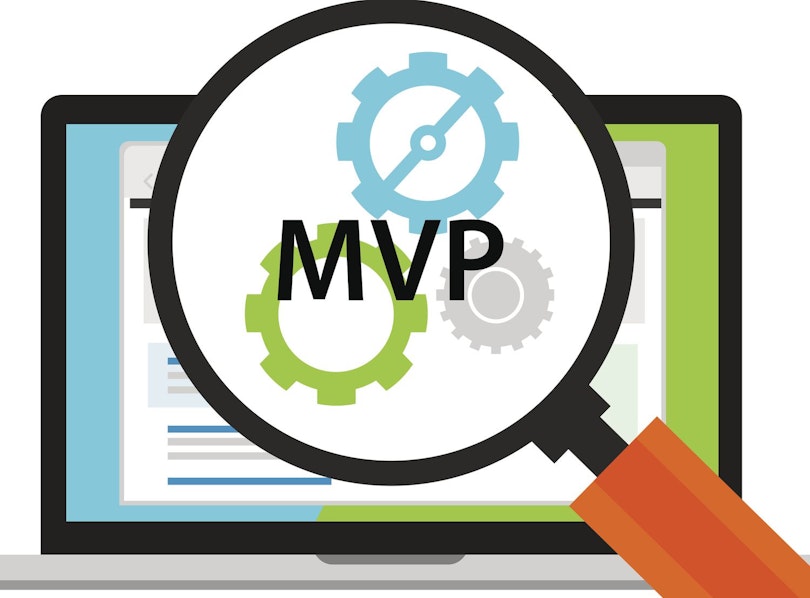
An MVP is a minimum viable product. Unlike a prototype that mainly shows how an app looks and feels, an MVP is created to actually work in real life.
In other words, an MVP is the simplest version of an app that can still meet the main requirements of its use case. It might not have all the advanced features you eventually want, but it includes all the basic functions needed to get it working.
The MVP concept started in the SaaS startup world. Early-stage companies used them to get working apps to market quickly and start gaining users. Now, it's a method used more widely in commercial and internal software development.
For example, if you're developing a tool to manage an internal business process, you can focus on the most important functions and bring them online quickly. This gives you immediate operational benefits. You can then add more features to your process application gradually.
An MVP doesn't sacrifice "good" for "perfect". Instead, it aims to provide the most value to users in the shortest time possible.
Prototype vs. MVP: The Key Differences
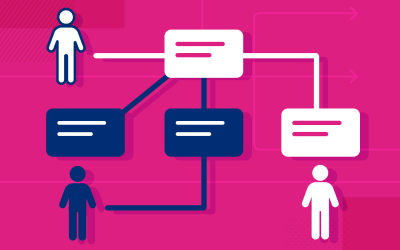
The main differences between prototypes and MVPs boil down to three factors:
1. Scope
2. Commitment
3 Audience
1. Scope
Prototypes can be quick and low-effort. You can create multiple prototypes, easily change them, and discard ideas quickly.
MVPs require more effort. You've chosen an idea and you're moving forward with it. This usually means using more resources and involving more people.
2. Commitment
Your commitment level differs for each approach. After investing time,resources, and effort into creating an MVP, you can’t abandon it that easily. While MVPs are designed to be affordable and allow for quick changes, starting over from scratch can be painful.
With prototypes, starting over can be as simple as throwing away a sketch and beginning anew. Even more complex prototypes require less commitment than a fully developed MVP.
3. Audience
Prototypes and MVPs target different types of users. Prototypes are mainly for internal use, shown to the teams and other professionals in your company. You might share them with the press to generate publicity or utilize them for other purposes like crowdfunding, but they're not meant for your wider target market.
MVPs, on the other hand, are designed for your target market. You want to gauge how well they're received. The "P" in MVP is the Product itself, after all. The public will judge your MVP, and it may influence their opinion when you release later versions.
Building Your MVP or Prototype?
Wondering how to create a MVP or prototype? While each requires different resources and data, some key principles apply to both:
1. Focus on customers
Many successful companies attribute their winning products to customer focus. Your product's goal is to deliver value to the users. So, concentrate on who you're building for.
2. Use data to drive decisions
You don't need to be an expert in data analysis, but numbers matter. Even if you're building your first product with limited data, think about what information you want to gather from your MVP or prototype. This will help you in the development of future versions.
3. Be willing to let go
You might love your MVP or prototype. But if nobody else feels that way about your product, it's time to rethink. Launching something nobody wants leads to failure.
4. Take action
You can spend too much time making your prototype as perfect as possible before moving to an MVP. You can also overwork your MVP before launch. If you want to create successful products, you need to let your target users see them at some point.
When to Build Prototypes and MVPs
We've seen key differences between prototypes and MVPs. Now, let's explore when each is generally created.
Both are used in application development projects, including commercial, internal, and consumer-facing software. We'll focus on their use in internal applications. Keep in mind, this isn't always an either/or choice. You might use both MVP and prototype at different stages of the same project.
Prototypes
Prototyping is crucial in traditional SDLCs, including Agile and Waterfall methods. It's particularly valuable for large-scale, complex software projects.
After gathering requirements and creating wireframes, development teams build prototypes to show stakeholders including users and decision-makers. They seek approval and feedback on their solution before building the actual product.
This process can apply to the entire project or individual features and modules.
The project's scope and complexity influence whether prototyping is worthwhile. The key factor is the time and effort needed to create a functional solution for user feedback. This will lead to sheer wastage of money if major changes are needed later.
For larger projects, getting early user input becomes increasingly important.
MVPs
MVPs are used in different contexts:
For simpler solutions, following a conventional development lifecycle with requirements gathering and prototyping might be unnecessary. For example, if you could build 90% of an internal tool in a week, spending two days on a prototype and another day seeking approval might not be efficient.
MVPs often serve as a more affordable option to conventional prototyping in smaller-scale projects.
In larger projects, MVPs might be used at later stages than prototypes. The ultimate goal is to start delivering value to your target users as soon as possible.
MVPs can help minimize time-to-value for larger internal applications.
However, some projects require high centralization and control, which may rule out the MVP approach.
Prototypes and MVPs: Limitations and Challenges
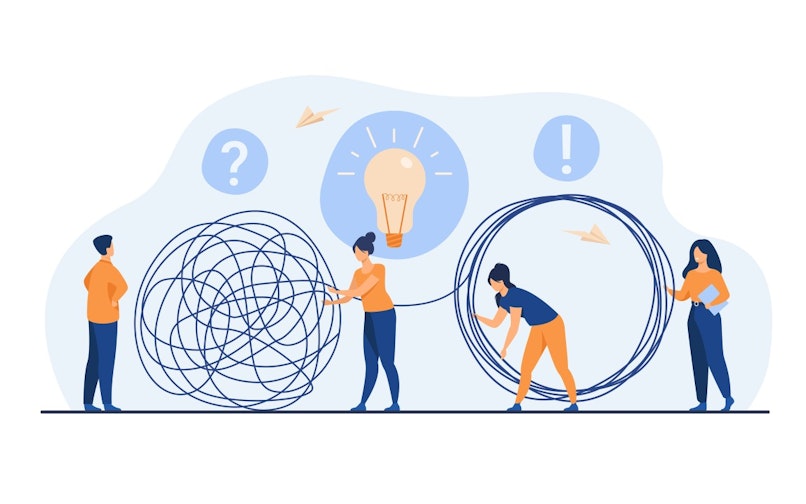
Both prototyping and creating MVPs have their own challenges and limitations. Understanding these helps you make informed decisions about when and how to use each approach.
Prototype Challenges
Prototyping can face these problems:
Unhelpful or contradictory user feedback
Getting prototype approval can be difficult, causing delays and costs
Building prototypes needs extra work before the project starts
Prototyping doesn't necessarily speed up product development, as it often focuses on basic functionality and visual elements.
Unclear expectations can lead to project spillover and scope creep
MVP Challenges
Creating MVPs also has its difficulties:
Without a prototype, you gather user feedback later in the development process
Some businesses just for the MVP and don't carry out planned later iterations
MVPs often put less focus on user experience, leading to less sophisticated UIs and design elements
Building an MVP for large-scale or complex use cases can be risky if you're unsure of the solution's validity
You might not know if your solution is effective until after you've built the MVP
Overcoming Challenges
These issues aren't insurmountable. They highlight how important it is to choose the right development approach for each context.
By understanding the strengths and weaknesses of both prototypes and MVPs, you can make better decisions about which approach to use for your specific project needs.
Conclusion: Choosing Between MVP and Prototype
The decision between creating an MVP or a prototype depends on your project's specific needs. Both approaches have their strengths and can be valuable tools in your product development process.
Prototypes excel at visualizing ideas and gathering early feedback, making them ideal for complex projects or when you need stakeholder buy-in. They allow you to test concepts without heavy investment.
MVPs, on the other hand, focus on delivering core functionality quickly. They're perfect for validating your product in the market and starting to provide value to the target users as soon as possible.
Remember, these approaches aren't mutually exclusive. Many successful projects use both, leveraging prototypes for initial concept testing and MVPs for market validation.
The key is to understand your project's goals, timeline, and resources. By doing so, you can choose the approach that best fits your needs and sets you up for success.
Ready to optimize your product development process?
At Adam Fard AI Design Agency, we specialize in creating tailored prototypes and MVPs that drive results. Our AI-powered approach ensures efficient, user-focused development that brings your ideas to life.
Contact us today to learn how we can help you navigate the MVP vs. prototype decision and accelerate your product development journey.
FAQs
1. Is a prototype the same as an MVP?
Nope, they're different. A prototype is like a model of your idea - it shows the general look, 3flow, and user interaction. An MVP, on the other hand, is a fully working version of your product, but with only the core features. The goal of an MVP is to get initial user feedback.
2. Why is it called a "prototype"?
The word "prototype" comes from the Greek words "prot-" meaning "first" and "typos" meaning "form" or "model." So a prototype is the first example or model of something, which later versions are based on.
3. What is a prototype in UX design?
In UX, a prototype is a rough draft of your product. It helps you figure out the right concept, user flow, and layout before investing a ton of time and money. Prototypes are like visual representations of your product - they bring your ideas to life.
4. Is a proof of concept the same as a prototype?
Not quite. A proof of concept tests if an idea is even feasible, while a prototype is a more tangible representation of the actual product. Think of a prototype as an intermediate step - it's a draft version that gets you closer to the final product.
5. How do prototypes and MVPs differ?
The key difference is that a prototype is just a model, while an MVP is a functional, market-ready product. An MVP has the core features needed to validate your idea with real customers. A prototype, on the other hand, is more about exploring and testing concepts before building the full product.

